Development and Validation of a Post-Earthquake Safety Assessment System for High-Rise Buildings Using Acceleration Measurements
Abstract
1. Introduction
2. Post-Earthquake Safety Assessment of Buildings
2.1. Rapid Safety Assessment Using Convolutional Neural Networks
- (1)
- Safe: ;
- (2)
- Restricted use: ;
- (3)
- Unsafe: .
2.2. Parametric Model Updating
2.3. Online Model Updating
3. Experimental Validation
3.1. Summary of Shaking Table Test for a 1/3-Scale Building
3.2. Modeling of an 18-Story Building
3.3. Simplified Analysis Models
3.4. Damage Sensitive Feature (DSF)
3.5. Training of the Convolutional Neural Networks
3.6. Validation Results Using Experimental Data
4. Discussion of Cost-Benefit Tradeoffs
5. Conclusions
Author Contributions
Funding
Institutional Review Board Statement
Informed Consent Statement
Data Availability Statement
Acknowledgments
Conflicts of Interest
References
- Takewaki, I.; Murakami, S.; Fujita, K.; Yoshitomi, S.; Tsuji, M. The 2011 off the Pacific coast of Tohoku earthquake and response of high-rise buildings under long-period ground motions. Soil Dyn. Earthq. Eng. 2011, 31, 1511–1528. [Google Scholar] [CrossRef]
- Government of Japan. Website of the Cabinet Office. Available online: http://www.kkr.mlit.go.jp/plan/daishinsai/ (accessed on 11 March 2021). (In Japanese)
- Ordinance for Measures Concerning Stranded Persons; Tokyo Metropolitan Government: Tokyo, Japan, 2013.
- Shirahama, Y.; Yoshimi, M.; Awata, Y.; Maruyama, T.; Azuma, T.; Miyashita, Y.; Mori, H.; Imanishi, K.; Takeda, N.; Ochi, T.; et al. Characteristics of the surface ruptures associated with the 2016 Kumamoto earthquake sequence, central Kyushu, Japan. Earth Planets Space 2016, 68, 191. [Google Scholar] [CrossRef]
- ATC-20-1. Field Manual: Postearthquake Safety Evaluation of Buildings; Applied Technology Council: Redwood City, CA, USA, 2005. [Google Scholar]
- The Japan Building Disaster Prevention Association. Postearthquake Quick Inspection of Damaged Buildings. Available online: http://www.kenchiku-bosai.or.jp/files/2013/11/epanfall.pdf (accessed on 17 October 2020).
- Website of The Japan Building Disaster Prevention Association. Available online: http://www.kenchiku-bosai.or.jp/assoc/oq-index/ (accessed on 17 October 2020). (In Japanese).
- Tokyo Metropolitan Government. Statistical Yearbook of Tokyo Metropolitan. Available online: https://www.toukei.metro.tokyo.lg.jp/homepage/ENGLISH.htm (accessed on 17 October 2020).
- City and County of San Francisco, Department of Building Inspection. BORP Guidelines for Engineers. Available online: https://sfdbi.org/borp#:~:text=The%20program%20allows%20San%20Francisco,consists%20of%20three%20basic%20phases/ (accessed on 25 April 2021).
- Casciati, F.; Gamba, P.; Giorgi, F.; Marazzi, A.; Mecocci, A. A Flexible Environment for Earthquake Rapid Damage Detection and Assessment. In Proceedings of the 1997 International Geoscience and Remote Sensing Symposium on Remote Sensing, Singapore, 3–8 August 1997; pp. 113–115. [Google Scholar]
- Gamba, P.; Casciati, F. GIS and image understanding for near-real-time earthquake damage assessment. Photogramm. Eng. Remote Sens. 1998, 64, 987–994. [Google Scholar]
- Bortoluzzi, D.; Casciati, F.; Elia, L.; Faravelli, L. Remote monitoring of urban and infrastructural areas. Earthquakes Struct. 2014, 7, 449–462. [Google Scholar] [CrossRef]
- Balkaya, C.; Casciati, F.; Casciati, S.; Faravelli, L.; Vece, M. Real-time identification of disaster areas by an open-access vision-based tool. Adv. Eng. Softw. 2015, 88, 83–90. [Google Scholar] [CrossRef]
- Xu, K.; Mita, A. Estimation of Maximum Drift of MDOF Shear Structures Using Only One Accelerometer. Struct. Health Monit. 2021, 18, 113–120. [Google Scholar]
- Tsuchimoto, K.; Narazaki, Y.; Hoskere, V.; Spencer, B.F. Rapid postearthquake safety evaluation of buildings using sparse acceleration measurements. Struct. Health Monit. 2021, 20, 1822–1840. [Google Scholar] [CrossRef]
- Mottershead, J.; Friswell, M. Model Updating In Structural Dynamics: A Survey. J. Sound Vib. 1993, 167, 347–375. [Google Scholar] [CrossRef]
- Beck, J.L.; Katafygiotis, S.L. Updating models and their uncertainties. I: Bayesian statistical framework. J. Eng. Mech. 1998, 124, 455–461. [Google Scholar] [CrossRef]
- Yuen, K.L. Bayesian Methods for Structural Dynamics and Civil Engineering; John Wiley & Sons: Hoboken, NJ, USA, 2010. [Google Scholar]
- Huang, Y.; Shao, C.; Wu, B.; Beck, J.L.; Li, H. State-of-the-art review on Bayesian inference in structural system identification and damage assessment. Adv. Struct. Eng. 2019, 22, 1329–1351. [Google Scholar] [CrossRef]
- Yuen, K.V.; Beck, J.L.; Katafygiotis, L.S. Efficient model updating and health monitoring methodology using incomplete modal data without mode matching. Struct. Control. Health Monit. 2006, 13, 91–107. [Google Scholar] [CrossRef]
- Mustafa, S.; Debnath, N.; Dutta, A. Bayesian probabilistic approach for model updating and damage detection for a large truss bridge. Int. J. Steel Struct. 2015, 15, 473–485. [Google Scholar] [CrossRef]
- Siringoringo, D.; Fujino, Y. System identification of suspension bridge from ambient vibration response. Eng. Struct. 2008, 30, 462–477. [Google Scholar] [CrossRef]
- Siringoringo, D.M.; Fujino, Y. System identification applied to long-span cable-supported bridges using seismic records. Earthq. Eng. Struct. Dyn. 2008, 37, 361–386. [Google Scholar] [CrossRef]
- Narazaki, Y.; Hoskere, V.; Spencer, B.F. Free vibration-based system identification using temporal cross-correlations. Struct. Control. Health Monit. 2018, 25, e2207. [Google Scholar] [CrossRef]
- Suita, K.; Suzuki, Y.; Takahachi, M. Collapse behavior of an 18-story steel moment frame during a shaking table test. Int. J. High-Rise Build. 2015, 4, 171–180. [Google Scholar]
- Mita, A.; Hirai, K.; Ozawa, S. Design Strategy of Structural Health Monitoring System Consisting of Four Sensors for Tall Buildings. In Proceedings of the 8th European Workshop on Structural Health Monitoring, Bilbao, Spain, 5–8 July 2016. [Google Scholar]
- Tsang, H.-H.; Su, R.; Lam, N.T.K.; Lo, S.H. Rapid assessment of seismic demand in existing building structures. Struct. Des. Tall Spéc. Build. 2009, 18, 427–439. [Google Scholar] [CrossRef]
- Port and Airport Research Institute. Large Size Structure Laboratory. Available online: https://www.pari.go.jp/unit/kozo/facilities/facility1.html. (accessed on 11 March 2021). (In Japanese).
- ASCE. Minimum Design Loads for Buildings and Other Structures; American Society of Civil Engineers: Reston, VA, USA, 2010. [Google Scholar]
- JSCA. The guide to safe buildings. In JSCA Performance-Based Seismic Design; Japan Structural Consultants Association: Tokyo, Japan, 2018. (In Japanese) [Google Scholar]
- Kitamura, H.; Miyauchi, Y.; Fukushima, J.; Fukada, Y.; Mori, N. Study on standard for judging structural performance in performance-based design. J. Struct. Constr. Eng. AIJ 2004, 576, 47–54. [Google Scholar] [CrossRef][Green Version]
- Sohn, H.; Farrar, C.R. Damage diagnosis using time series analysis of vibration signals. Smart Mater. Struct. 2001, 10, 446–451. [Google Scholar] [CrossRef]
- Levi, E.C. Complex-curve fitting. IEEE Trans. Autom. Control. 1959, 4, 37–44. [Google Scholar] [CrossRef]
- de Vries, D.K.; van den Hof, P.M.J. Frequency domain identification with generalized orthonormal basis functions. IEEE Trans. Autom. Control. 1998, 43, 656–669. [Google Scholar] [CrossRef]
- Ho, B.L.; Kalman, R.E. Effective Construction of Linear State Variable Models from Input/Output Data. at-Automatisierungstechnik 1966, 14, 545–548. [Google Scholar] [CrossRef]
- Juang, J.N. Applied System Identification; Prentice-Hall, Inc.: Hoboken, NJ, USA, 1994. [Google Scholar]
- Kim, S.B.; Spencer, B.F.; Yun, C.-B. Frequency Domain Identification of Multi-Input, Multi-Output Systems Considering Physical Relationships between Measured Variables. J. Eng. Mech. 2005, 131, 461–472. [Google Scholar] [CrossRef]
- Juang, J.-N. System Realization Using Information Matrix. J. Guid. Control. Dyn. 1997, 20, 492–500. [Google Scholar] [CrossRef]
- Juang, J.N.; Cooper, J.E.; Wright, J.R. An eigensystem realization algorithm using data correlations (ERA/DC) for modal parameter identification. Control. Theory Adv. Technol. 1988, 4, 5–14. [Google Scholar]
- Wilson, E.; Habibullah, A. Sap 2000 Integrated Finite Element Analysis and Design of Structures Basic Analysis Refence Manual; Computers and Structures: Berkeley, CA, USA, 1998. [Google Scholar]
- Federal Emergency Management Agency, FEMA-356. Prestandard and Commentary for Seismic Rehabilitation of Buildings; Federal Emergency Management Agency: Washington, DC, USA, 2000.
- Arakawa, T.; Yamamoto, K. Frequencies and damping ratios of a high rise building based on microtremor measurement. In Proceedings of the 13th World Conference on Earthquake Engineering, Vancouver, BC, Canada, 1–6 August 2004. [Google Scholar]
- Baber, T.T.; Wen, Y.-K. Random vibration of hysteretic degrading systems. J. Eng. Mech. Div. 1981, 107, 1069–1087. [Google Scholar] [CrossRef]
- Wen, Y.K. Equivalent linearization for hysteretic systems under random vibration. J. Appl. Mech. 1980, 47, 150–154. [Google Scholar] [CrossRef]
- Bouc, R. Force vibration of mechanical systems with hysteresis. In Proceedings of the 4th Conference Nonlinear Oscillation, Prague, Czech Republic, 5–9 September 1967; p. 315. [Google Scholar]
- Building Performance Standardization Association. Typical Measured Historical Earthquake in Japan. Available online: https://www.seinokyo.jp/jsh/top/ (accessed on 11 March 2021). (In Japanese).
- Soong, T.T.; Grigoriu, M. Random Vibration of Mechanical and Structural Systems; NASA STI/Recon Technical Report A; NASA: Washington, DC, USA, 1993; Volume 93, p. 14690. [Google Scholar]
- Bogdanoff, J.L.; Goldberg, J.E.; Bernard, M.C. Response of a simple structure to a random earthquake-type disturbance. Bull. Seismol. Soc. Am. 1961, 51, 293–310. [Google Scholar] [CrossRef]
- Laina, I.; Rupprecht, C.; Belagiannis, V.; Tombari, F.; Navab, N. Deeper Depth Prediction with Fully Convolutional Residual Networks. In Proceedings of the 2016 Fourth International Conference on 3D Vision (3DV), Stanford, CA, USA, 25–28 October 2016; Institute of Electrical and Electronics Engineers (IEEE): Piscataway, NJ, USA, 2016; pp. 239–248. [Google Scholar]
- Zwald, L.; Lambert-Lacroix, S. The berhu penalty and the grouped effect. arXiv 2012, arXiv:1207.6868. [Google Scholar]
- Li, B.; Kiureghian, A.D. Operational modal identification using variational bayes. Mech. Syst. Signal Process. 2017, 88, 277–398. [Google Scholar] [CrossRef]
- Li, B.; Au, S.-K. An expectation-maximization algorithm for Bayesian operational modal analysis with multiple (possibly close) modes. Mech. Syst. Signal Process. 2019, 132, 490–511. [Google Scholar] [CrossRef]
- Application of Structural Health Monitoring and Validation of Operation Services. Available online: http://www.nilim.go.jp/lab/ieg/tasedai/shiryou/091030_1_5_2.pdf (accessed on 3 April 2021). (In Japanese).
- Implementation of Shelter Guidance System for Commuters Who Are Unable to Return Home Based on Structural Health Monitoring. Available online: https://www.jst.go.jp/ristex/funding/files/JST_1115131_13418904_mita_ER.pdf (accessed on 3 April 2021). (In Japanese).
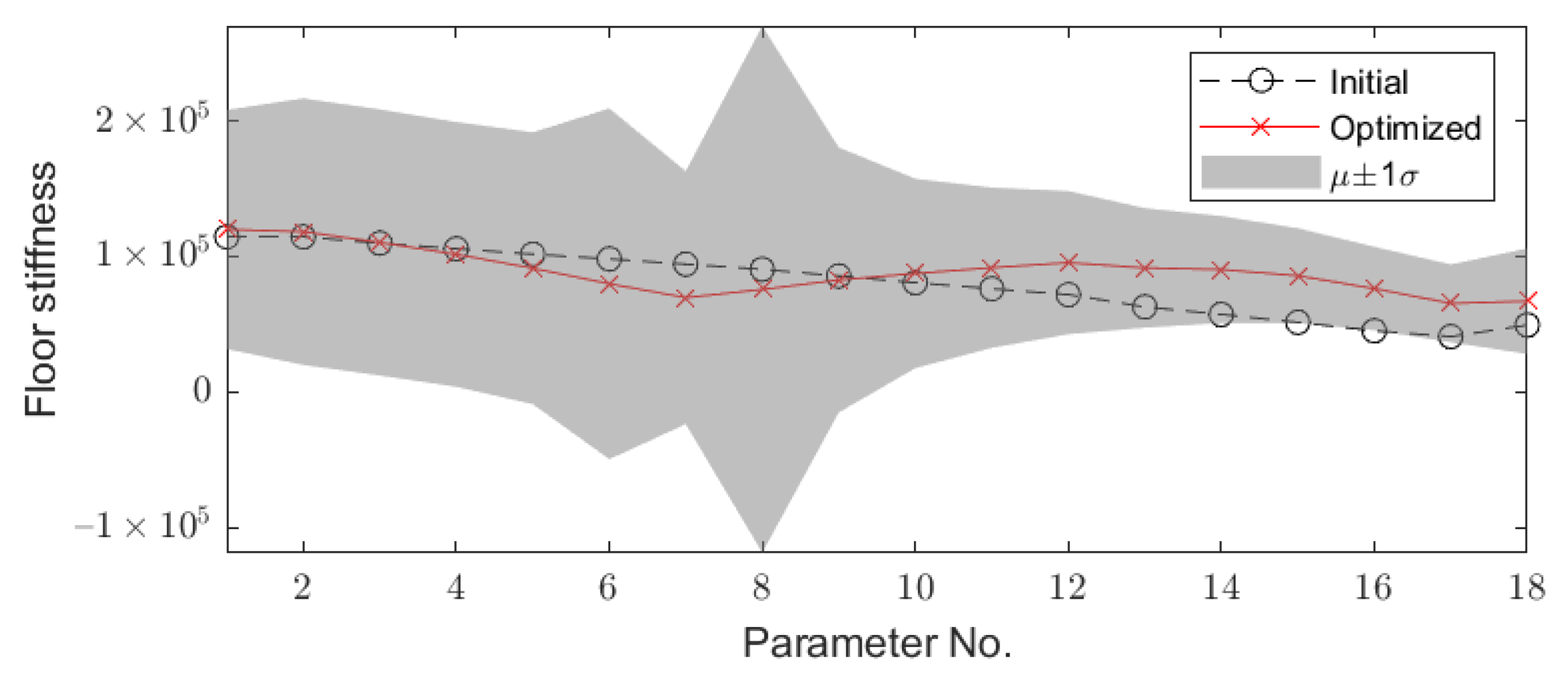
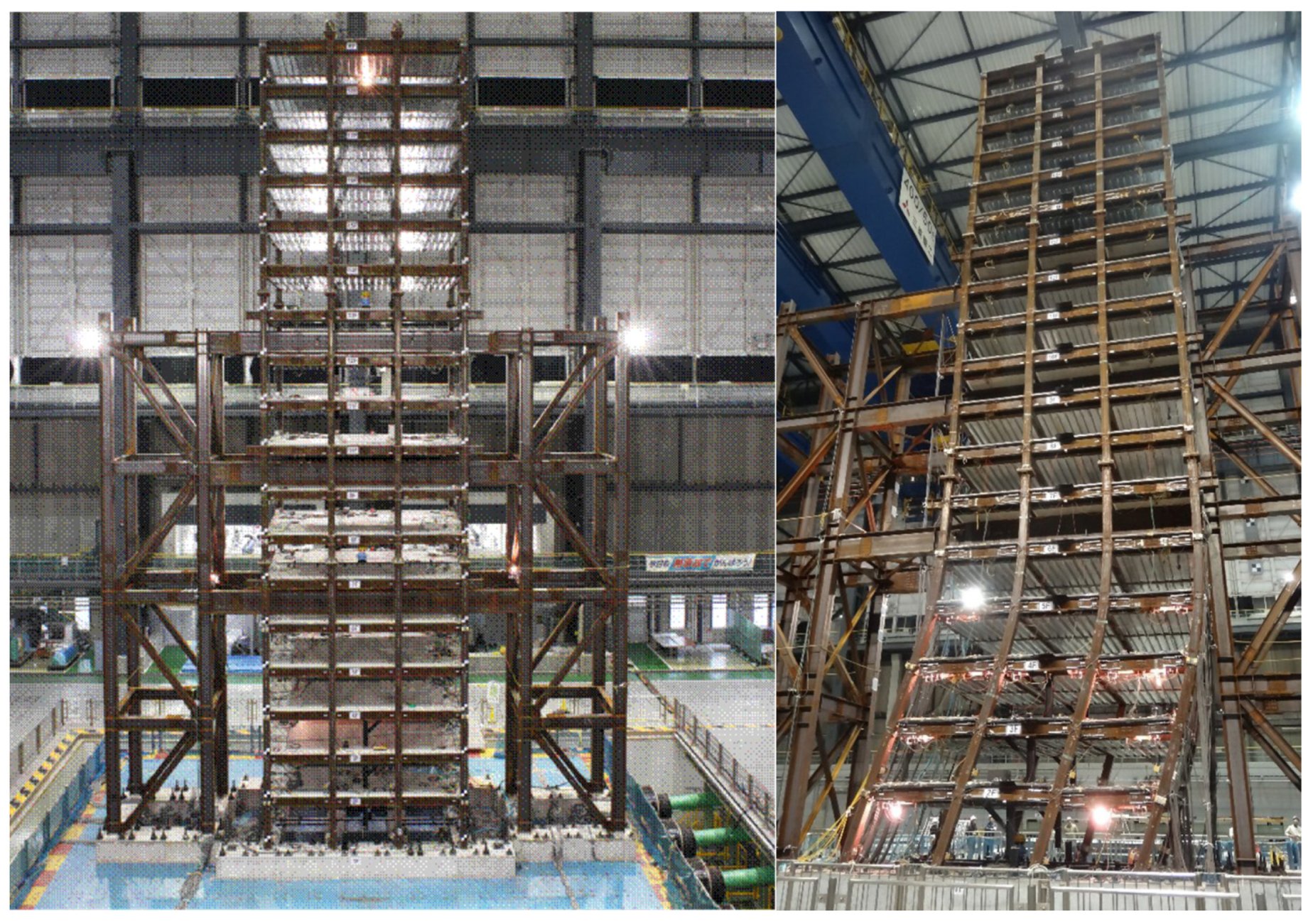

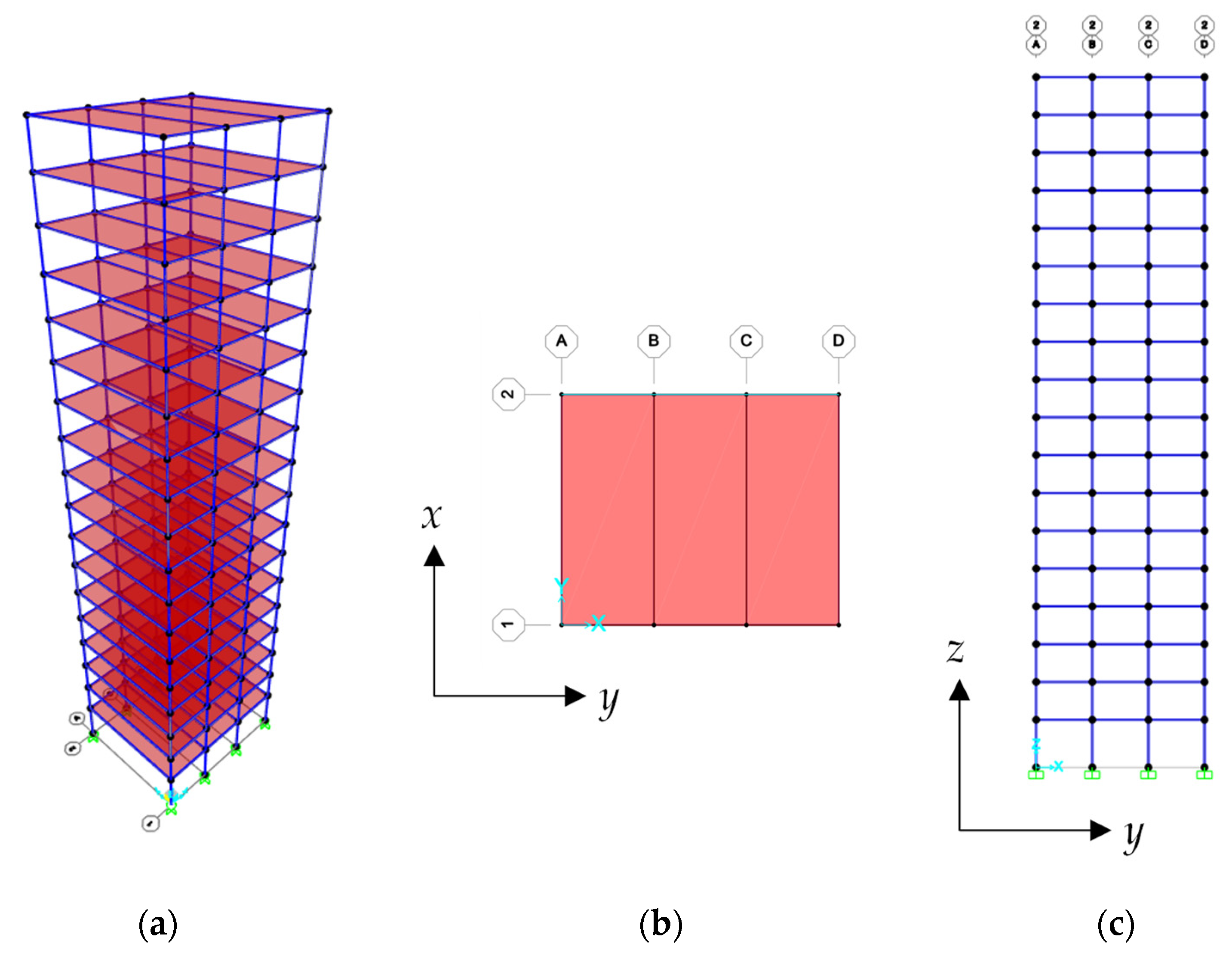
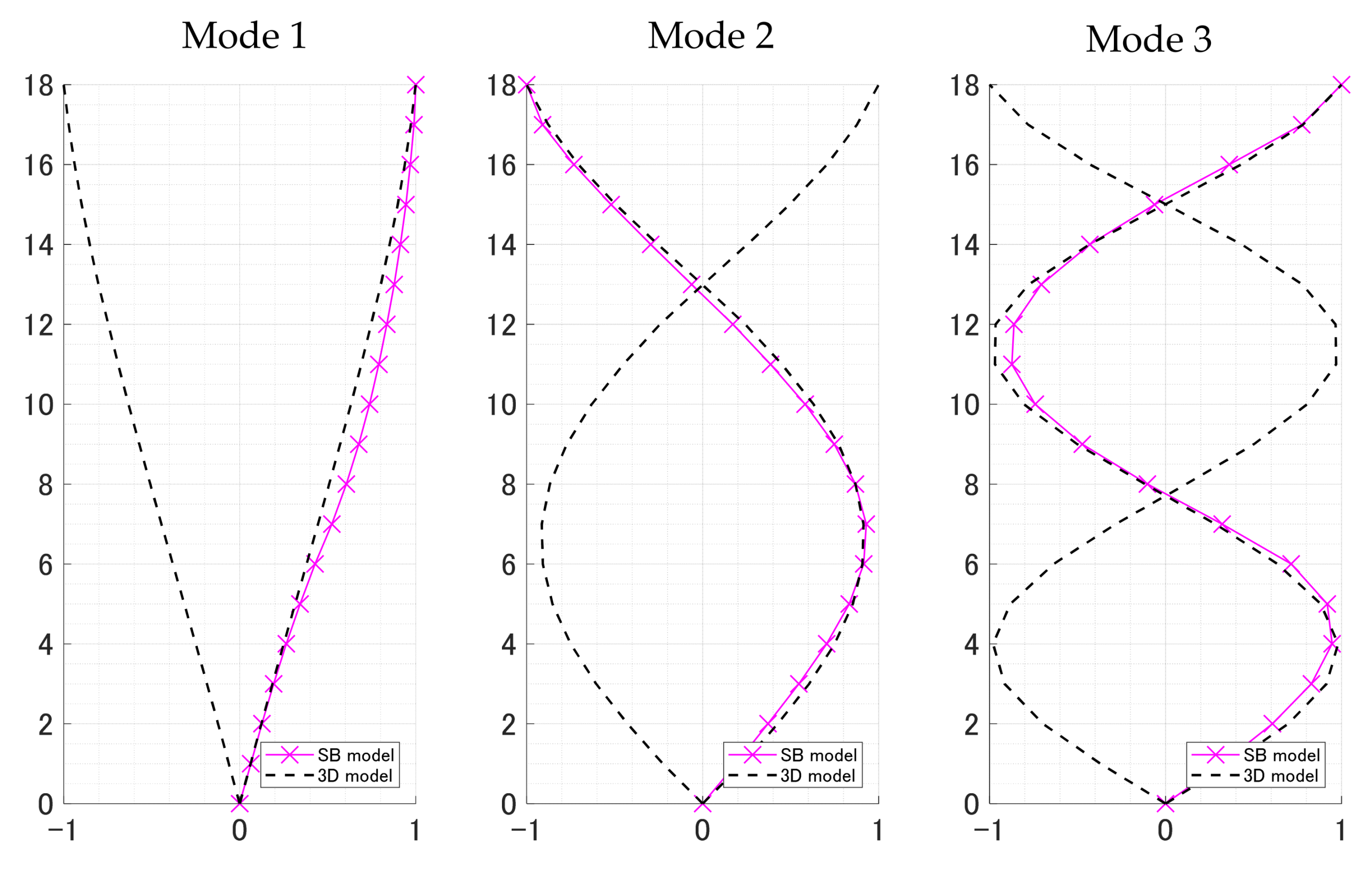
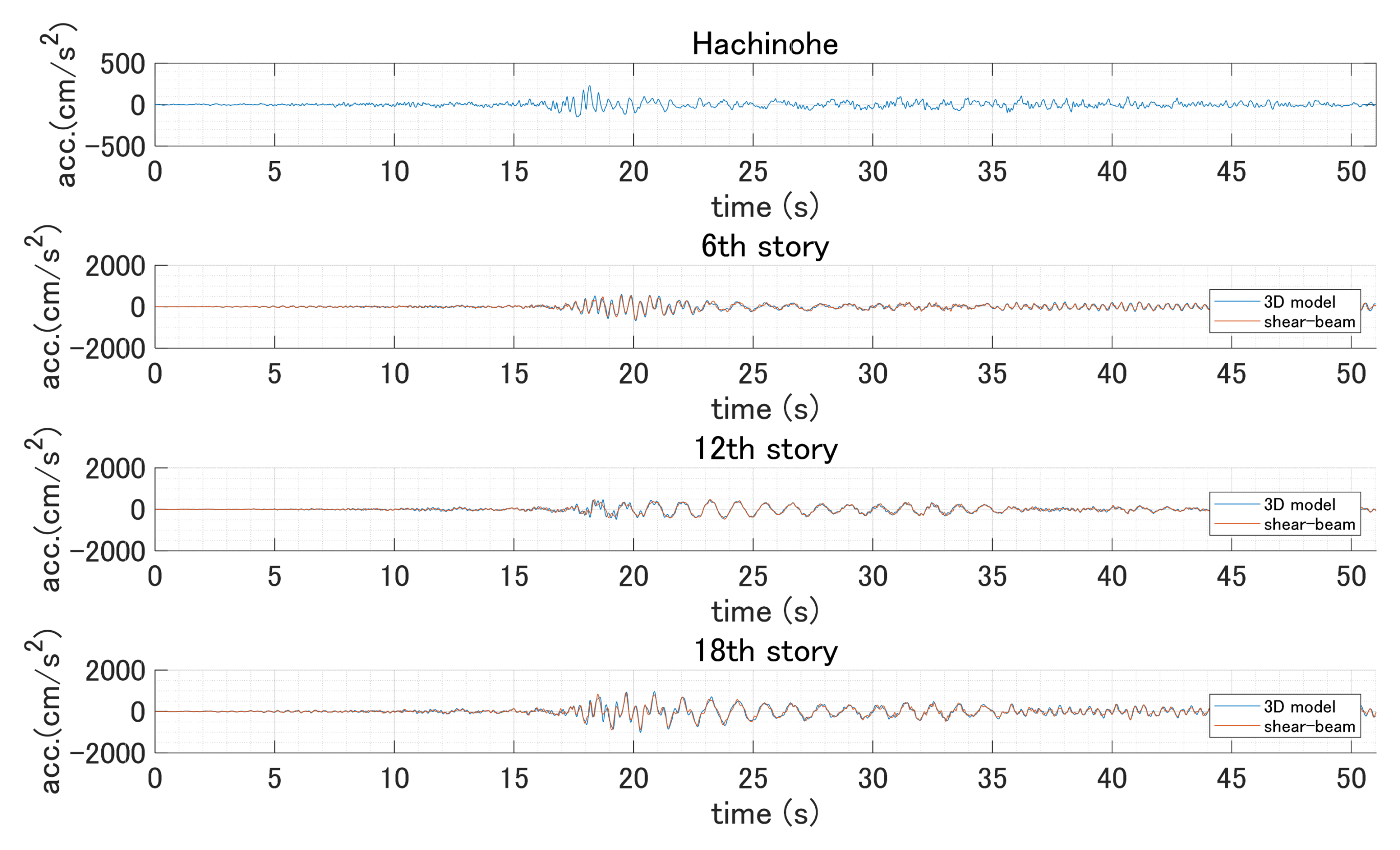

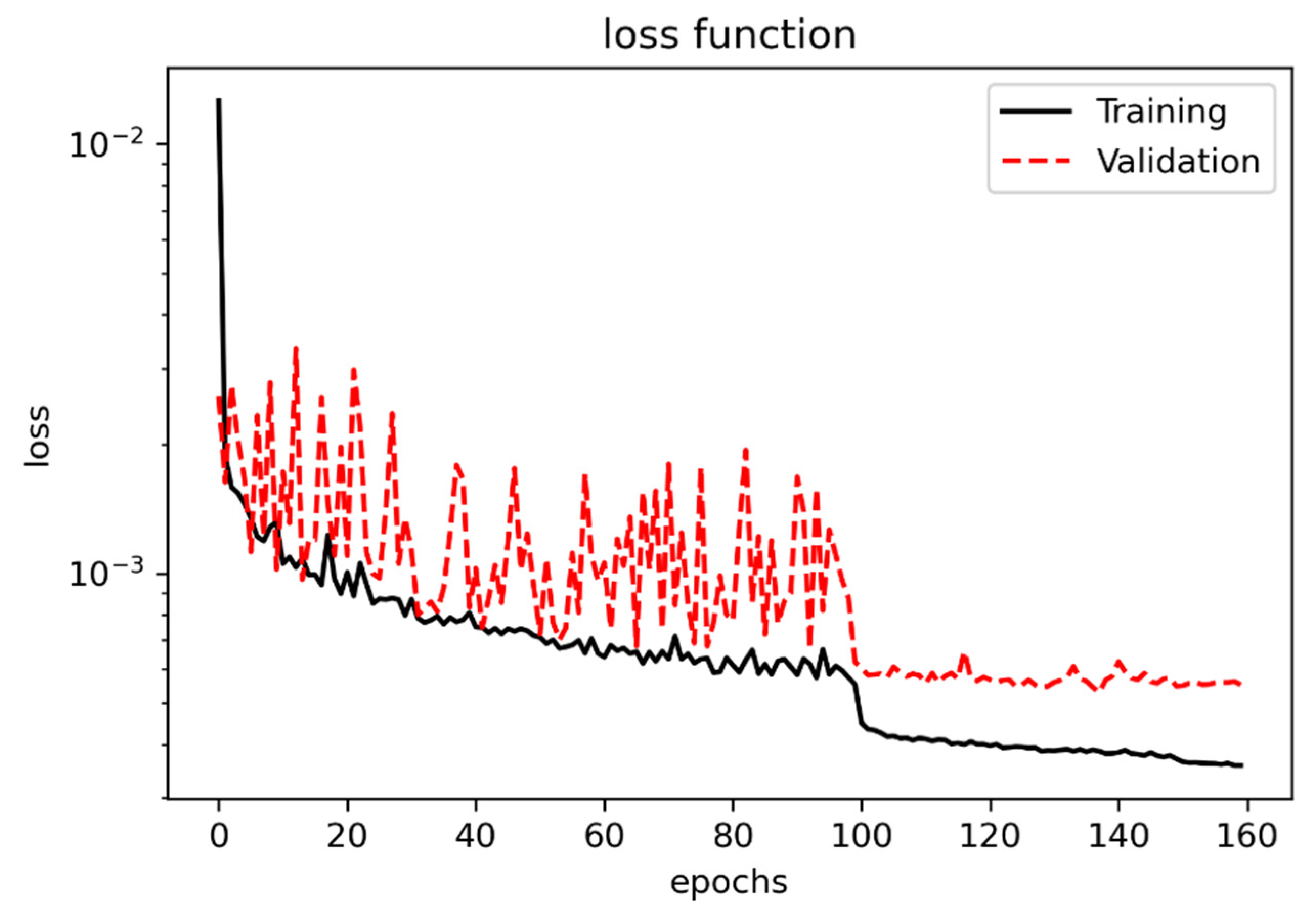
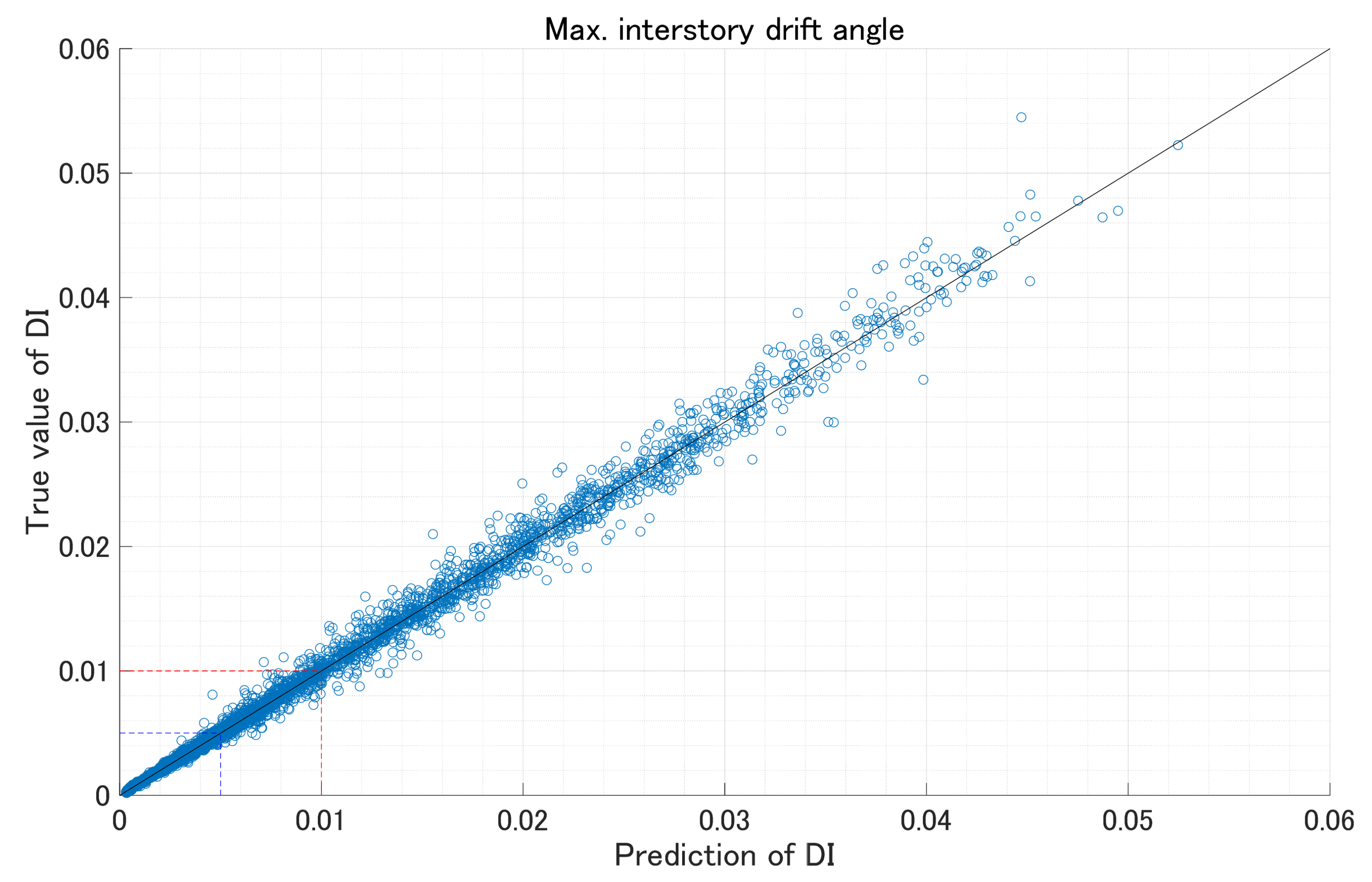
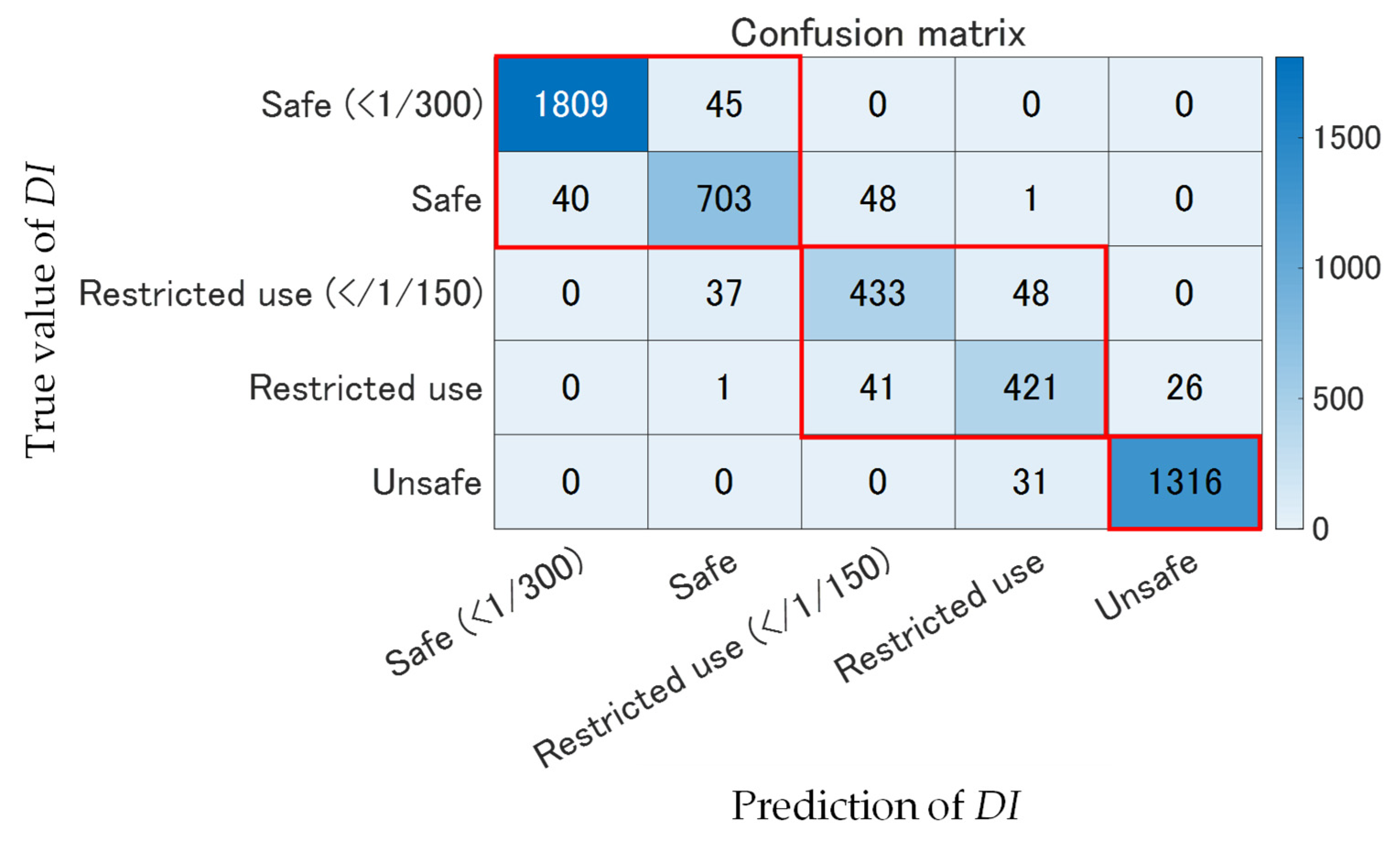
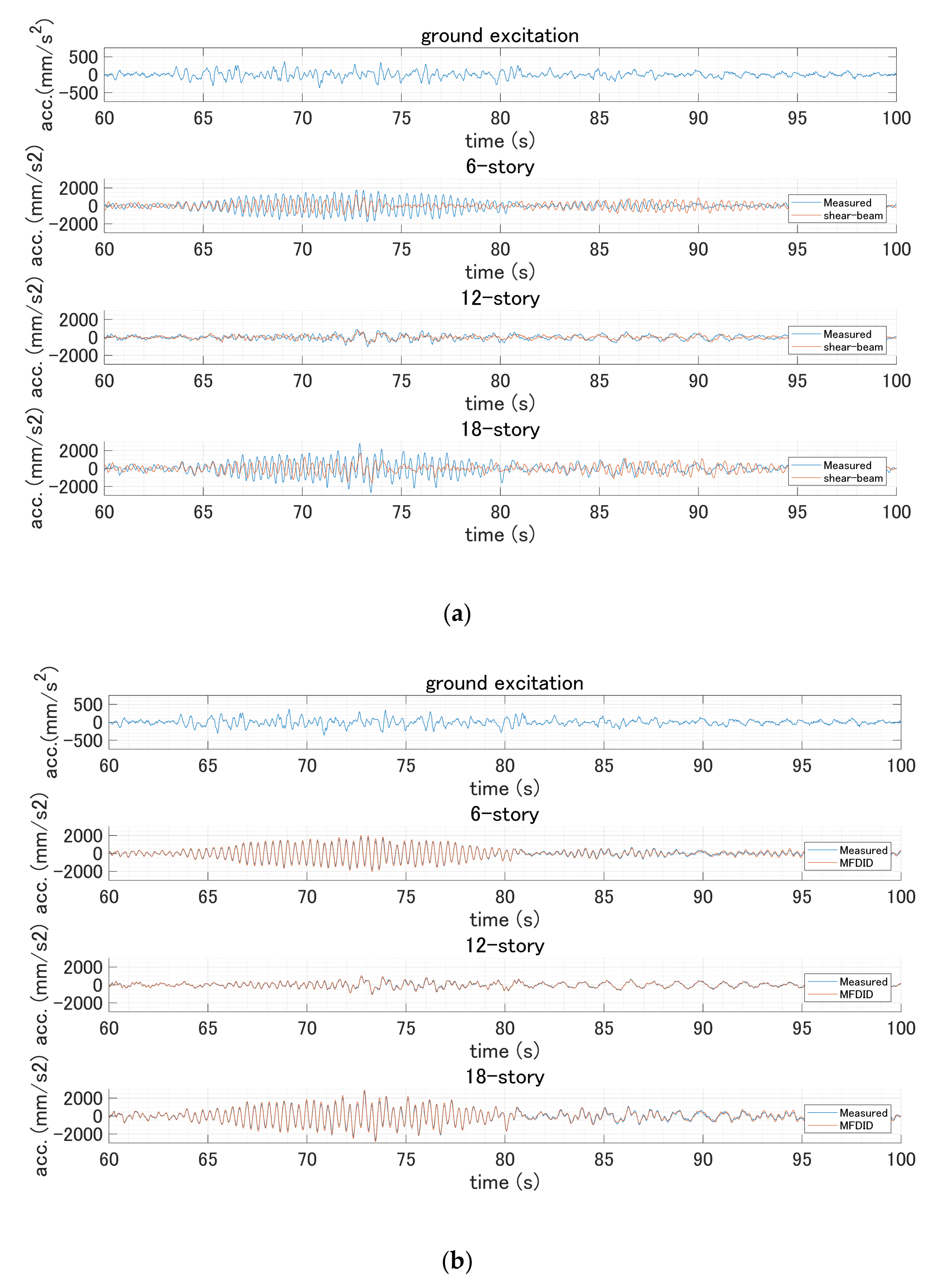



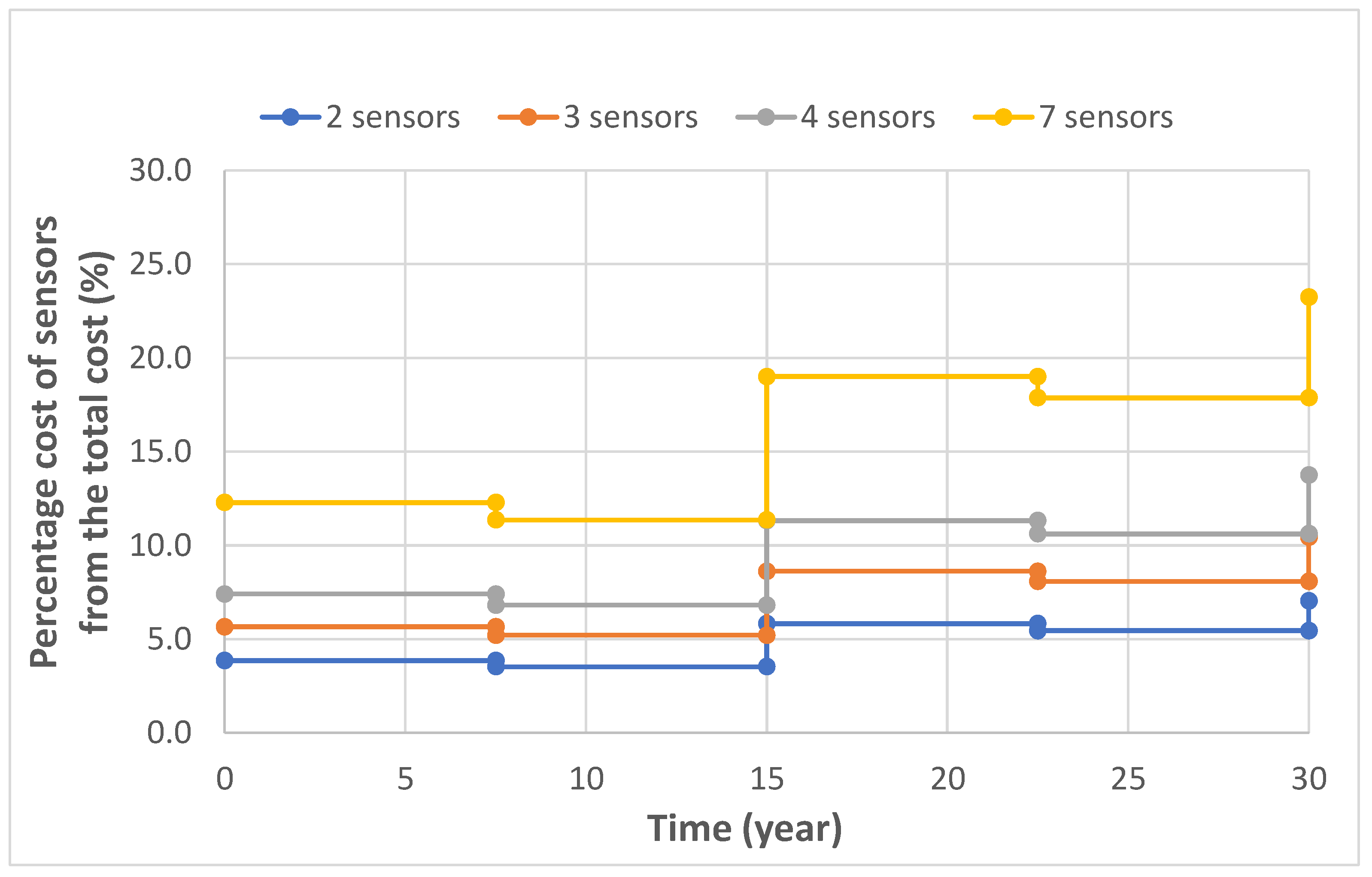
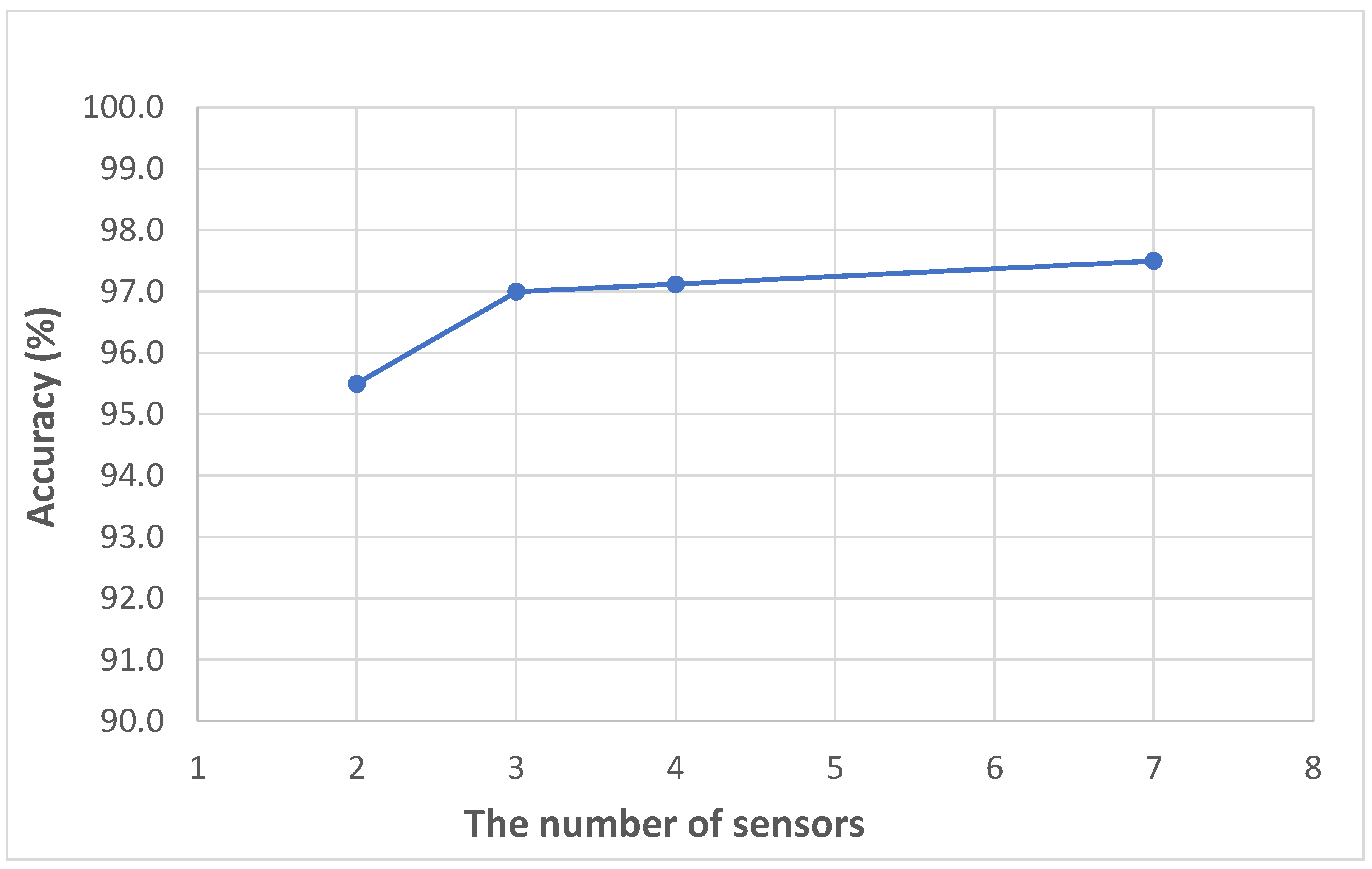
| Building Condition | No Damage | Minor Damage | Damage | Extreme Damage |
|---|---|---|---|---|
| Maximum drift angle | 1/300 | 1/150 | 1/100 | 1/75 |
| Residual crack width | Less than 0.2 mm | 0.2 mm | 0.2–1.0 mm | More than 1.0 mm |
| Repair | No need | Minor repair | Repair of crack Small-scale repair | Repair of crack Large-scale repair |
| Building Condition | No Damage | Minor Damage | Damage | Extreme Damage |
|---|---|---|---|---|
| Maximum drift angle | 1/200 | 1/150 | 1/100 | 1/75 |
| Ductility ratio | 1.0 | 2.0 | 3.0 | 4.0 |
| Repair | No need | Minor repair | Small-scale repair | Large-scale repair |
| Exp. | pSv (cm/s) | Maximum Drift Angle | Damage State | Safety Classification |
|---|---|---|---|---|
| 1 | 16 | 1/556 (at 14th floor) | No damage (elastic) | Safe |
| 2 | 40 | 1/171 (at 14th floor) | No damage (elastic) | Restricted use |
| 3 | 81 | 1/110 (at 3rd and 14th floor) | 2nd–4th floor beam end yielded | Restricted use |
| 4 and 5 | 110 | 1/90 and 1/91 (at 14th floor) | 2nd–7th floor beam end and column base yielded | Unsafe |
| 6 and 7 | 180 | 1/62 and 1/55 (at 11th floor) | 2nd–14th floor beam end yielded | Unsafe |
| Story | Floor Height (m) | Mass (kN) | Stiffness (105 kN/m) | ||||||
|---|---|---|---|---|---|---|---|---|---|
| 1 | 1.70 | 230.5 | 1.20 | 1.28 | 0.03 | 1.0 | 2 | 0.5 | 0.5 |
| 2 | 1.35 | 230.5 | 1.18 | 1.14 | 0.04 | 1.0 | 2 | 0.5 | 0.5 |
| 3 | 1.35 | 230.5 | 1.10 | 1.14 | 0.04 | 1.0 | 2 | 0.5 | 0.5 |
| 4 | 1.35 | 230.5 | 1.02 | 1.14 | 0.04 | 1.0 | 2 | 0.5 | 0.5 |
| 5 | 1.35 | 230.5 | 0.91 | 1.14 | 0.05 | 1.0 | 2 | 0.5 | 0.5 |
| 6 | 1.35 | 230.5 | 0.80 | 1.14 | 0.05 | 1.0 | 2 | 0.5 | 0.5 |
| 7 | 1.35 | 230.5 | 0.70 | 0.91 | 0.06 | 1.0 | 2 | 0.5 | 0.5 |
| 8 | 1.35 | 230.5 | 0.76 | 1.14 | 0.07 | 1.0 | 2 | 0.5 | 0.5 |
| 9 | 1.35 | 230.5 | 0.83 | 1.14 | 0.07 | 1.0 | 2 | 0.5 | 0.5 |
| 10 | 1.35 | 230.5 | 0.87 | 1.14 | 0.07 | 1.0 | 2 | 0.5 | 0.5 |
| 11 | 1.35 | 230.5 | 0.92 | 1.14 | 0.07 | 1.0 | 2 | 0.5 | 0.5 |
| 12 | 1.35 | 230.5 | 0.95 | 1.14 | 0.07 | 1.0 | 2 | 0.5 | 0.5 |
| 13 | 1.35 | 230.5 | 0.92 | 1.14 | 0.07 | 1.0 | 2 | 0.5 | 0.5 |
| 14 | 1.35 | 230.5 | 0.90 | 1.14 | 0.07 | 1.0 | 2 | 0.5 | 0.5 |
| 15 | 1.35 | 230.5 | 0.86 | 1.14 | 0.07 | 1.0 | 2 | 0.5 | 0.5 |
| 16 | 1.35 | 230.5 | 0.76 | 1.14 | 0.07 | 1.0 | 2 | 0.5 | 0.5 |
| 17 | 1.35 | 230.5 | 0.65 | 1.14 | 0.07 | 1.0 | 2 | 0.5 | 0.5 |
| 18 | 1.35 | 230.5 | 0.67 | 1.14 | 0.07 | 1.0 | 2 | 0.5 | 0.5 |
| Mode | 3D Model (s) | Simplified Model (s) |
|---|---|---|
| 1st | 1.18 | 1.18 |
| 2nd | 0.39 | 0.39 |
| 3rd | 0.22 | 0.25 |
| Contents | Range |
|---|---|
| Power intensity () | 0.01–0.10 |
| Natural period (s) | 0.20–3.00 |
| Damping coefficient | 0.20–0.50 |
| Time duration (s) | 60.0 |
| Envelope () | 0.15, 0.30, 0.45, and 1.50 |
| Envelope () | 0.06, 0.11, 0.17, and 0.55 |
| Contents | Range |
|---|---|
| Secondary slope | |
| Yielding point |
| Input Layer | The size of inputs: 4 × 3001 (Ground acceleration, 6th, 12th, and 18th floor of DSFs) |
| Convolutional layer | 1st convolutional layer Learnable filter size: 4 × 10 The number of filters: 256 Stride: 1 Activation function: relu 2nd convolutional layer Learnable filter size: 1 × 10 The number of filters: 256 Stride: 1 Activation function: relu 3rd convolutional layer Learnable filter size: 1 × 10 The number of filters: 256 Stride: 1 Activation function: relu 4th convolutional layer Learnable filter size: 4 × 10 The number of filters: 256 Stride: 1 Activation function: relu |
| Pooling layer | Maximum pooling layer: 1 × 5 |
| Fully connected layer | The number of fully connected layers: 2 layers The number of cells: 1024 each Activation function: relu |
| Output layer | The size of output: 1 (maximum interstory drift angle of all floors) |
Publisher’s Note: MDPI stays neutral with regard to jurisdictional claims in published maps and institutional affiliations. |
© 2021 by the authors. Licensee MDPI, Basel, Switzerland. This article is an open access article distributed under the terms and conditions of the Creative Commons Attribution (CC BY) license (https://creativecommons.org/licenses/by/4.0/).
Share and Cite
Tsuchimoto, K.; Narazaki, Y.; Spencer, B.F., Jr. Development and Validation of a Post-Earthquake Safety Assessment System for High-Rise Buildings Using Acceleration Measurements. Mathematics 2021, 9, 1758. https://doi.org/10.3390/math9151758
Tsuchimoto K, Narazaki Y, Spencer BF Jr. Development and Validation of a Post-Earthquake Safety Assessment System for High-Rise Buildings Using Acceleration Measurements. Mathematics. 2021; 9(15):1758. https://doi.org/10.3390/math9151758
Chicago/Turabian StyleTsuchimoto, Koji, Yasutaka Narazaki, and Billie F. Spencer, Jr. 2021. "Development and Validation of a Post-Earthquake Safety Assessment System for High-Rise Buildings Using Acceleration Measurements" Mathematics 9, no. 15: 1758. https://doi.org/10.3390/math9151758
APA StyleTsuchimoto, K., Narazaki, Y., & Spencer, B. F., Jr. (2021). Development and Validation of a Post-Earthquake Safety Assessment System for High-Rise Buildings Using Acceleration Measurements. Mathematics, 9(15), 1758. https://doi.org/10.3390/math9151758






